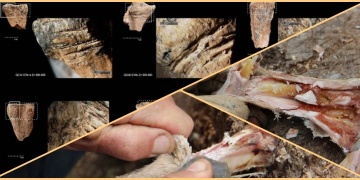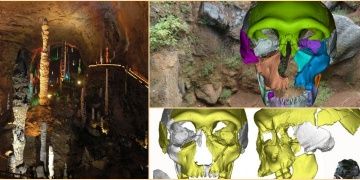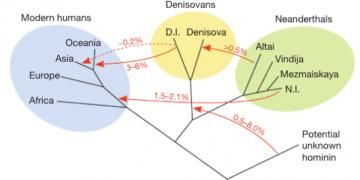
Archaeologist have unearthed a double-pointed stick dating back 300,000 years. They believe it was thrown sideways like a boomerang, rather than like a spear. A recent study of early human woodwork at the University of Reading revealed that early…

Archaeologists, developed methods for the enrichment and analysis of nuclear DNA from sediments, and applied them to cave deposits in western Europe and southern Siberia dated to between approximately 200,000 and 50,000 years ago.

Isotopic and functional morphological analyses of early hominins are compatible with consumption of hard foods, such as mechanically-protected seeds, but dental microwear analyses are not. The protective shells surrounding seeds are thought to induce…

"Fire was presumed to be the domain of Homo sapiens but now we know that other ancient humans like Neanderthals could create it," says Daniel Adler, associate professor in anthropology.

420,000 to 200,000 years ago, prehistoric humans at Qesem Cave were sophisticated enough, intelligent enough and talented enough to know that it was possible to preserve particular bones of animals under specific conditions, and, when necessary,…

In an article published in Proceedings of the National Academy of Sciences (PNAS), researchers describe the remains of Middle Pleistocene humans dating to about 300,000 years ago which were found in Hualongdong (HLD), China.

Researchers used a deep learning algorithm to identify a new human ancestor. Newly identified extinct hominid likely went on to breed with modern human

















 Milletvekili Aykut Kaya: Antalya Arkeoloji müzesi aynı yere yapılacaksa kamu israfı
Milletvekili Aykut Kaya: Antalya Arkeoloji müzesi aynı yere yapılacaksa kamu israfı  Ağrı Dağı'ndaki Nuh'un Gemisi oluşumu nasıl keşfedildi, dünyaya nasıl tanıtıldı?
Ağrı Dağı'ndaki Nuh'un Gemisi oluşumu nasıl keşfedildi, dünyaya nasıl tanıtıldı?  Bizanslı Kadınlarla Osmanlı Kadınları benzer kaderlere sahipmiş!
Bizanslı Kadınlarla Osmanlı Kadınları benzer kaderlere sahipmiş!  Zelve problemi: Önce turizm mi kayrılmalı yoksa kültürel ve doğal miras mı korunmalı?
Zelve problemi: Önce turizm mi kayrılmalı yoksa kültürel ve doğal miras mı korunmalı? 

